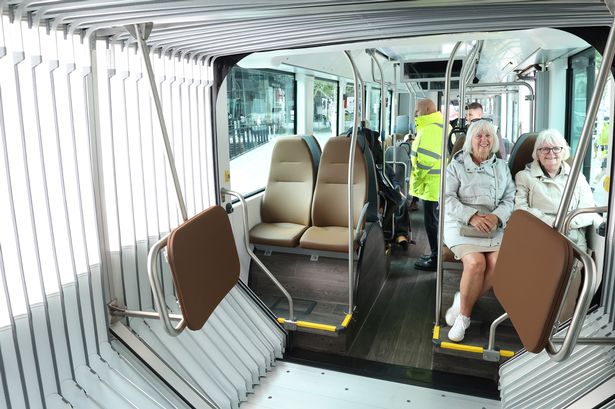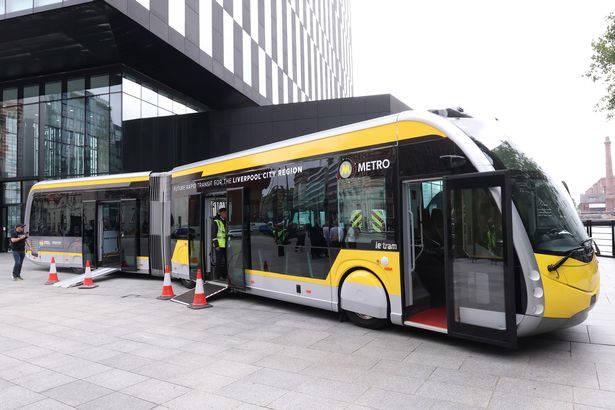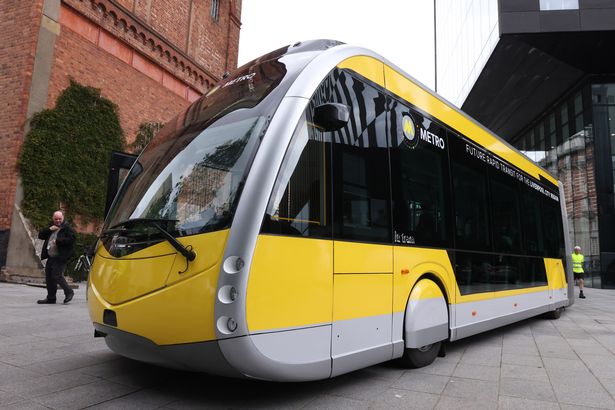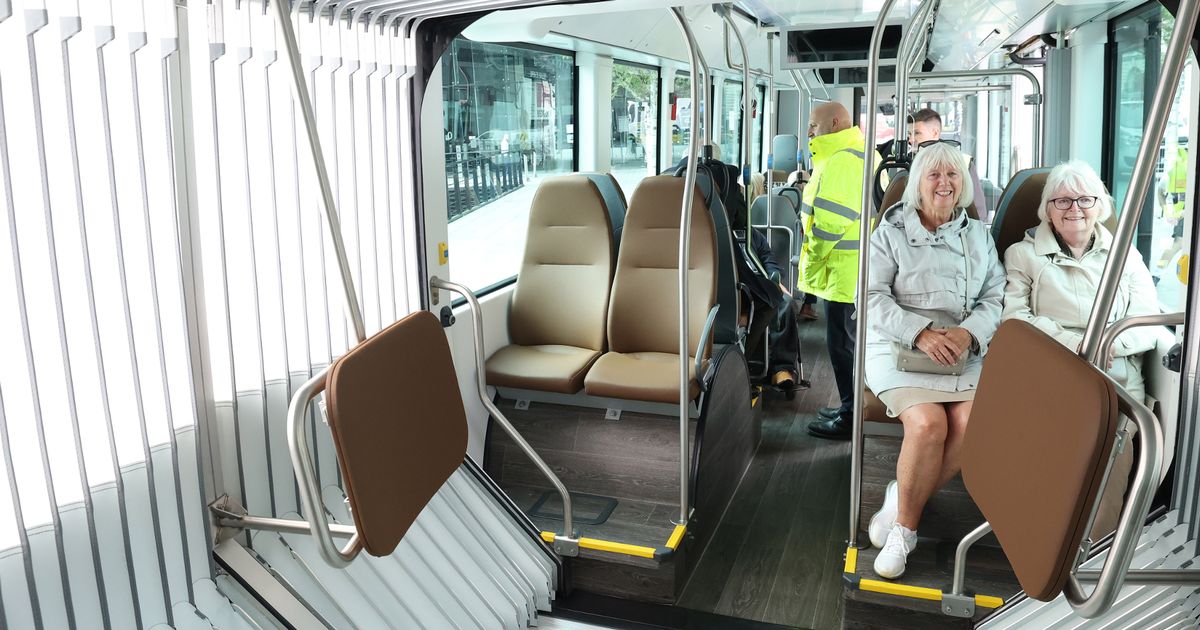Sometimes referred to as a ‘Glider’ or ‘rapid bus transit’ – the planned new network is dividing opinion, so we went to check it out On board the new ‘Glider’ in Liverpool (Image: Liverpool Echo)
On board the new ‘Glider’ in Liverpool (Image: Liverpool Echo)
This week, if you have been travelling around Liverpool, you may have noticed a different form of public transport on the roads. That’s because a rapid transit vehicle has been being tested on the roads of the city.
On loan from Spanish manufacturer Irizar, the 18-metre battery-powered vehicle, wrapped in the Liverpool City Region’s Metro livery, follows last year’s initial trial using a Translink vehicle from Belfast.
The new testing is seeing the vehicle – referred to by some as a ‘Glider’ – travelling on key commuter routes in a bid to see how such a vehicle would and could operate on our local roads.
That’s because by 2028, it is hoped Gliders will be fully operational in this region, running on busy routes to Anfield and the Hill Dickinson stadiums as well as Liverpool John Lennon Airport.
It is hoped that over time, the network – funded as part of a major £1.6bn government investment – could be extended to other areas not currently served by the regional rail network, helping to better connect communities right across the region.
 The new ‘glider’ bus on display in Liverpool today(Image: Liverpool Echo)
The new ‘glider’ bus on display in Liverpool today(Image: Liverpool Echo)
As well as Gliders travelling around the region, one of the vehicles was also parked up today outside the CA offices at Mann Island, allowing local people to climb on board and take a look around – and the ECHO joined them.
One thing that is clear is how spacious these vehicles are. Transport leaders are keen to point out that gliders offer 30% more capacity than a standard double decker bus, which could be particularly handy for those heading to the airport with lots of bags.
Two sets of double doors are aimed to help with boarding and alighting along with level access and off-vehicle ticketing. It is envisaged that when it arrives in our region, the Glider will travel at times on its own dedicated road-space, while at other times mixing with traffic.
But not everyone is impressed. Its fair to say Mayor Rotheram has taken a fair bit of criticism on social media regarding this plan – with many saying it represents a poor replacement for a tram system that the Liverpool City Region lacks.
We put this criticism to Mayor Rotheram on board the Glider today, he said: “Well first of all we should have got a tram system but our local authorities couldn’t work together in the 1990s and 2000s. The Lib Dem council at the time were the ones who were held responsible, quite rightly, for the cancellation of Merseytram.
“I would have loved to have inherited that and to be able to build on that and we could have taken it to all sorts of places. The difficulty is that an act of parliament is needed and the previous one had expired – and we didn’t want to go to Parliament to push something through unless we had the certainty that we could afford to build it.
 The new ‘glider’ bus on display in Liverpool today(Image: Liverpool Echo)
The new ‘glider’ bus on display in Liverpool today(Image: Liverpool Echo)
“Even with the £1.6 billion from government, a tram would be unfeasible because it would suck all that up plus a lot more.”
On the Glider, he added: “People want to see things today and this is the most feasible way in which we can make a step change in the public transport system. And we have said this is something that could happen very quickly. So in 12, 18 months, we could have these around the City region.”
He added: “I think when people see it aesthetically, it looks sleek, it looks modern, it’s got all of the latest technology on it.
“But when you get on board, you see, for instance, that the height is massive, and it’s very similar to what you get on a tram and it allows passenger flow more easily and of course with the different sets of doors, we then can also get people on much more quickly and off more quickly.
“It’s accessible for people who are using wheelchairs. I just think this is a game changer for us. But this is only part of our integrated public transport system. It will fit alongside our brand new trains and the new buses we have already bought. So people will see and feel that the public transport system in the city region is very different within the next sort of 12 to 18 months.”
